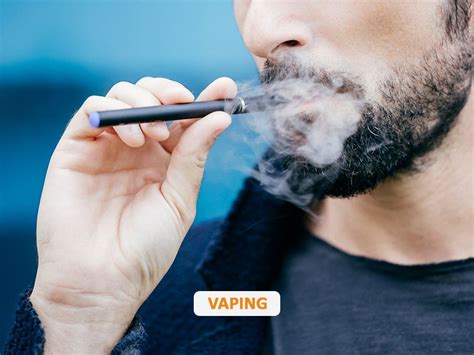The Big Picture
The rise of vaping has sparked concerns over its potential impact on indoor air quality. While air purifiers offer a promising solution to mitigate these concerns, it remains unclear which type of air purifier is most effective in removing vaping smoke. This article will delve into the science behind air purifiers and vaping smoke, comparing their effectiveness and providing insights into the best strategies for maintaining a healthy indoor environment.

Air Purifiers: How They Work
Air purifiers work by capturing airborne particles and contaminants through various filtration mechanisms. These mechanisms include:
- HEPA filters: High-Efficiency Particulate Air (HEPA) filters are highly effective in removing particles as small as 0.3 microns, including tobacco smoke, dust mites, and pollen.
- Activated carbon filters: Activated carbon filters absorb gases, odors, and chemicals, including volatile organic compounds (VOCs) released from vaping devices.
- Ionic air purifiers: Ionic air purifiers release negative ions that attach to airborne particles, causing them to clump together and fall out of the air.
Vaping Smoke: Its Components and Effects
Vaping smoke is composed of aerosolized liquid nicotine, flavors, and other chemicals. Studies have shown that vaping smoke contains particulate matter, nicotine, and other harmful substances that can worsen respiratory symptoms and contribute to long-term health problems.
- Particulate matter: Vaping smoke contains particulate matter that ranges in size from 0.01 to 0.5 microns. These particles can penetrate deep into the lungs and cause inflammation and other respiratory issues.
- Nicotine: Nicotine is the primary addictive substance in both tobacco and vaping devices. While it is not as harmful as other chemicals in cigarette smoke, nicotine can still have negative effects on the heart and circulatory system.
- Other chemicals: Vaping devices emit a variety of chemicals, including formaldehyde, acetaldehyde, and aerosolized flavors. These chemicals have been linked to respiratory and cardiovascular problems, as well as potential carcinogenic effects.
Air Purifier vs Vaping Smoke: The Comparison
To effectively mitigate the impact of vaping smoke on indoor air quality, it is crucial to choose an air purifier that meets the specific needs of your environment. Here is a comparison of different types of air purifiers and their effectiveness in removing vaping smoke:
| Air Purifier Type | Effectiveness |
|---|---|
| HEPA filter | High |
| Activated carbon filter | Moderate |
| Ionic air purifier | Low |
HEPA filters are the most effective in removing vaping smoke particles, capturing up to 99.97% of particles as small as 0.3 microns. Activated carbon filters are less effective in removing particles but can absorb harmful gases and chemicals released by vaping devices. Ionic air purifiers are not as effective as HEPA or activated carbon filters in removing vaping smoke but can still help reduce airborne particles.
Choosing the Right Air Purifier
When selecting an air purifier for vaping smoke removal, consider the following factors:
- Room size: Choose an air purifier with a Clean Air Delivery Rate (CADR) that is appropriate for the size of the room where it will be used.
- Type of smoke: HEPA filters are the most effective in removing vaping smoke particles, while activated carbon filters can absorb harmful gases.
- Budget: Air purifiers range in price from a few hundred dollars to thousands of dollars, so it’s essential to set a budget before shopping.
Benefits of Using an Air Purifier with Vaping Smoke
Using an air purifier with vaping smoke can provide several benefits, including:
- Improved air quality: Air purifiers can significantly reduce the concentration of vaping smoke particles and other pollutants in the air, creating a healthier environment for occupants.
- Reduced respiratory symptoms: Vaping smoke can irritate the lungs and airways, leading to respiratory symptoms such as coughing, wheezing, and shortness of breath. Air purifiers can help reduce these symptoms by removing vaping smoke particles from the air.
- Protection from long-term health effects: Vaping smoke contains harmful chemicals that can contribute to long-term health problems such as cardiovascular disease and cancer. Air purifiers can help mitigate these risks by reducing exposure to these chemicals.
Conclusion
Air purifiers can effectively remove vaping smoke from indoor air, reducing the concentration of harmful particles and improving air quality. HEPA filters are the most effective in removing vaping smoke particles, while activated carbon filters can absorb harmful gases and chemicals. When choosing an air purifier, consider the room size, type of smoke, and budget. Using an air purifier with vaping smoke can provide numerous benefits, including improved air quality, reduced respiratory symptoms, and protection from long-term health effects.





















